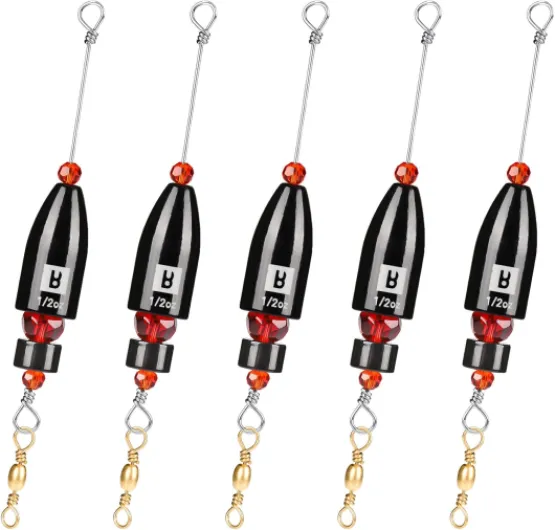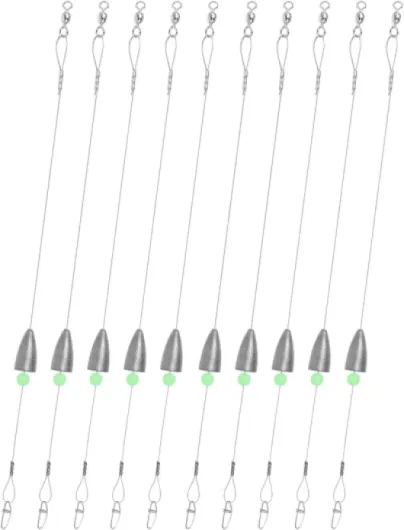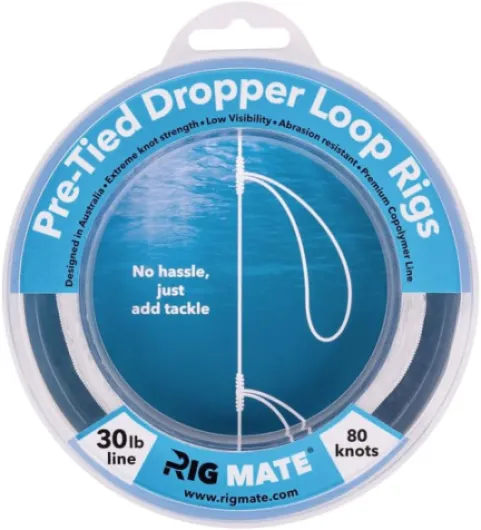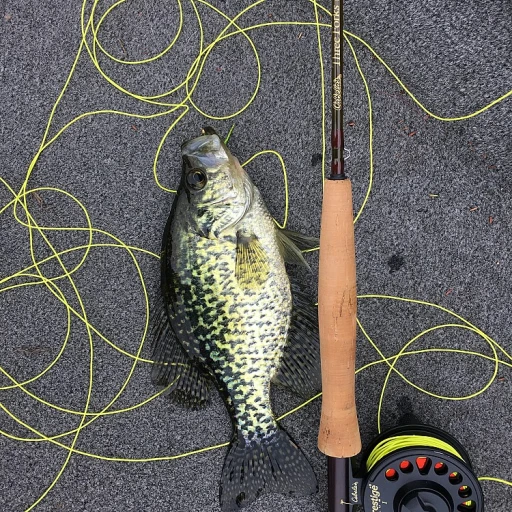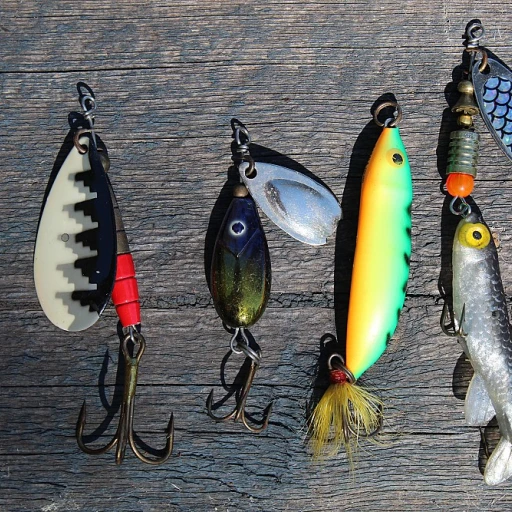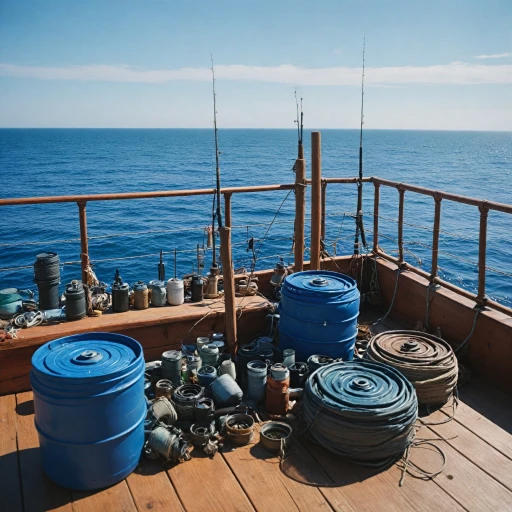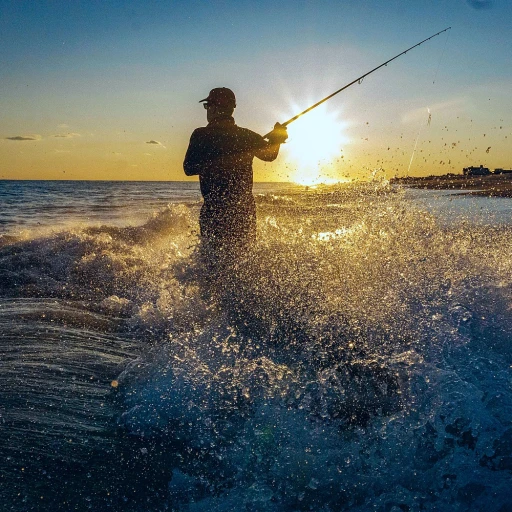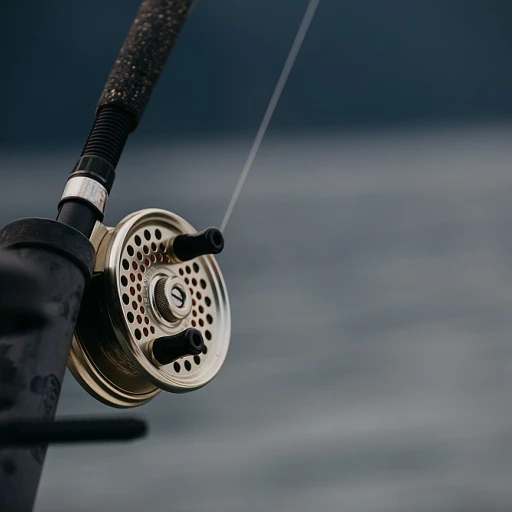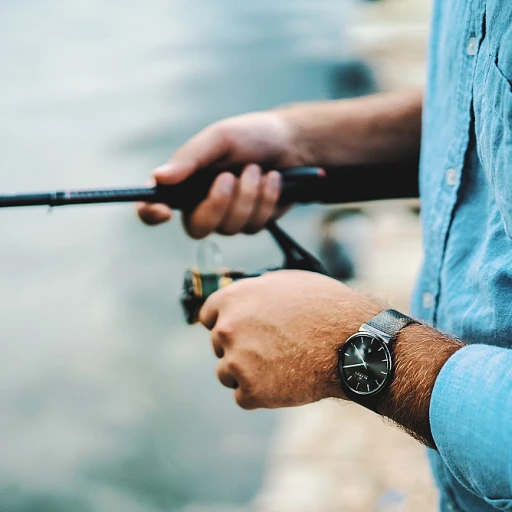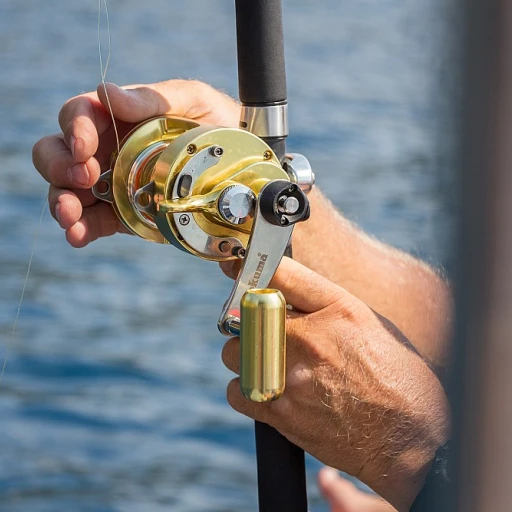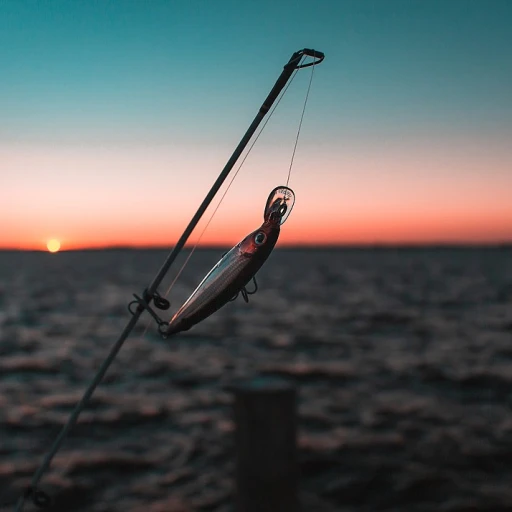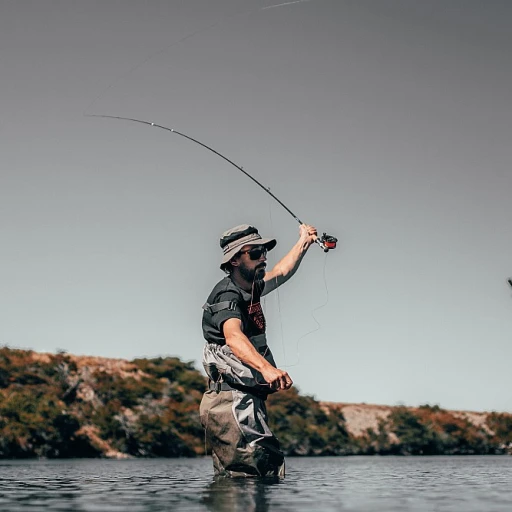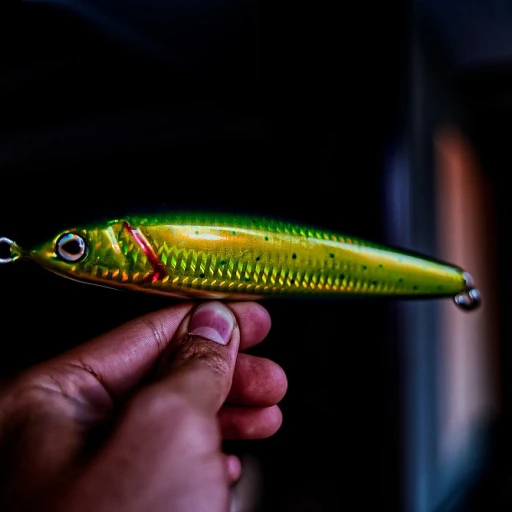
Understanding Carolina Rigs
Grasping the Basics of Carolina Rigs
Carolina rigs are a tried-and-tested method in the world of fishing, renowned for their simplicity and effectiveness. To successfully harness the power of a Carolina rig, it's crucial to first understand its anatomy. The core of this rig consists of a main line, usually connected to a barrel swivel, which then attaches to a foot leader. This leader is a crucial element, providing the necessary stroke width to entice bottom-dwelling fish. The rig employs an egg sinker that slides on the main line, allowing the bait to drift naturally and provoke strikes. A glass bead is typically added between the sinker and swivel, which protects your knot and creates an attractive clicking sound under water. Selecting the right hook and leader length is important, as different species may require adaptations to ensure you catch fish efficiently. Materials often vary, with anglers favoring different weights and lengths depending on target fish and conditions. Use a bead and barrel swivel to maintain smooth movement and control. Those looking to enhance their rig often turn to soft plastics or live bait as proven choices. Care should be taken to ensure the rig's fill and adjustability optimize the bait's movement, encouraging more bites without leaving unnecessary slack in the line. For those new to the world of mastering the art of trailer tie-down for recreational fishing, setting up your Carolina rig is just the beginning of an exciting angling journey. Once you've set up your rig, the next steps involve choosing the right gear and applying effective techniques for maximum success. With practice, patience, and the right approach, mastering Carolina rigs can lead to unforgettable fishing experiences.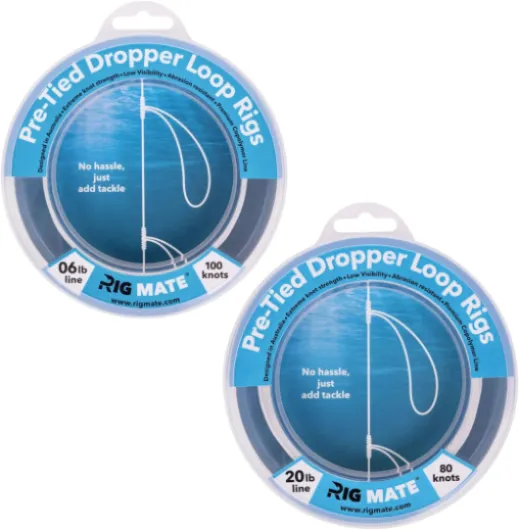
- + Convenient Bundle - Includes both 6 lb and 20 lb lines
- + Ready to Use - Comes with pre-tied Dropper Loop Rigs
- + Versatile - Suitable for both saltwater and freshwater fishing
- + Great Value - Multiple rigs included per package
Choosing the Right Gear for Carolina Rigs
Essential Gear to Optimize Your Carolina Fishing Experience
To effectively utilize a Carolina Rig, choosing the appropriate gear is crucial. This rig's design incorporates various components that must be tailored to specific fishing conditions to ensure a successful outcome. Let's delve into the gear essentials that will refine your Carolina fishing approach.
- Fishing Rod and Reel: Opt for a medium to heavy power rod with a fast action to provide the sensitivity and strength needed to detect subtle strokes and perform a swift hook set. Pair this with a reliable baitcasting reel offering smooth casting and precise retrieve abilities. For an in-depth guide on selecting the best baitcasting combos for anglers, check out this resource.
- Line and Leader: The main fishing line should be a sturdy monofilament or fluorocarbon with a test strength ranging from 10 to 20 pounds. Using a fluorocarbon leader, typically between 12 to 24 inches, can reduce visibility in water and increase your chances to catch fish. Adjust the leader length based on water clarity and the fish species targeted.
- Weights and Sinkers: The egg sinker is a popular choice for Carolina rigs due to its ability to slide freely along the main line, providing natural bait movement. Weights between 1/2 to 1 ounce are common, but always consider water depth and current conditions.
- Connectors and Beads: A barrel swivel connects the main line to the leader, preventing line twists while allowing free movement. Adding a glass or plastic bead between the weight and swivel serves as a cushion, protecting knots and creating an enticing sound that can attract fish.
- Baits and Hook Selection: Depending on the target species, you can choose between soft plastics, live bait, or lures. Select a strong, sharp hook sized according to bait type and the species pursued. A wider hook can accommodate larger baits, such as soft plastics or live worms.
By ensuring all elements of your Carolina rig are harmonized with your environment, you fill find it easier to feel the bottom's texture and detect subtle fish movements. This strategic preparation enhances your chances for a fruitful day on the water.
Techniques for Effective Use
Refining Your Technique for Effective Carolina Rig Use
Successfully fishing Carolina rigs demands a nuanced understanding of technique. Both beginners and seasoned anglers can refine their approach to maximize efficacy. Here, we take a closer look at optimizing your stroke, maintaining the right feel, and ensuring successful hook sets.
First things first, pay attention to the stroke width. A subtle, controlled movement is often the key to encouraging that enticing presentation on the bottom that mimics live bait. This rig will allow your bait to glide smoothly while the egg sinker maintains contact with the bottom. As a result, the fish are lured by the beads' noise and the sight of soft plastics trailing behind.
When it comes to feeling the fish, angling experts emphasize the importance of remaining in tune with your gear. Keep a semi-tight line as you reel slack, allowing you to quickly detect those delicate strikes. Adjust your leader width and leader length as needed; a longer foot leader may improve your chances depending on water conditions and target species.
For an effective hook set, patience and precision are crucial. Once you feel the telltale tug on your line, don’t be too hasty to react. Carolina rigs require a deliberate set to ensure the hook catches. Picture a delayed snap instead of an immediate pull, which helps to raise your catch rate exponentially.
To further enhance your technique, consider exploring concepts such as the best way to present baits within the strike zone, adapting to different water temperatures, or implementing advanced tactics shared by expert anglers. For more on mastering techniques in fishing, explore our insights on refining your tarpon fly fishing skills.
Target Species and Best Conditions
Identifying Ideal Targets and Conditions
Carolina rigs are known for their versatility, allowing anglers to catch a wide array of fish species. Here are some bass (including large and smallmouth bass), catfish, and even bottom feeders like flounder and red drum.- Bass Fishing: Bass are particularly fond of Carolina rigs because the setup allows the soft plastics to move freely, enticing these predatory fish. The leader length - often around 12 to 18 inch - is key in letting your bait mimic the natural movement of prey. During prespawn and spawn, bass will aggressively attack the bait, making this technique highly effective.
- Catfish: For catfish, live bait or cut bait works well with this rig. The egg sinker sits on the bottom while the leader keeps the bait suspended, reaching catfish with ease. Best tried in deeper waters where catfish are often found lurking.
- Bottom Feeders: When targeting bottom feeders, the Carolina rig's ability to keep bait close to the substrate is highly advantageous. By adjusting your weight and leader, you allow for the optimal presentation to entice strikes from species comfortable hiding near structure like rocks and logs.
Optimal Weather and Water Conditions
Using your reel slack wisely, combined with an understanding of seasonal and weather conditions, will improve your fishing carolina strategy. Here are crucial factors to consider:- Time of Day: Early morning and late afternoon are peak times due to increased fish activity. However, mid-morning and dusk can also be productive.
- Water Clarity: Clearer waters call for subtle, natural-colored soft plastics and leader to enhance the shot with natural birds.
- Temperature and Season: Cooler waters in the spring induce activity in prespawn fish, whereas summer’s warmer waters encourage fish to seek deeper, cooler environments.
Common Mistakes and How to Avoid Them
Steering Clear of Common Mistakes
Even experienced anglers can fall into some traps when using Carolina rigs. Awareness and preparation can make a significant difference in your fishing success. Let's explore some common mistakes and how to sidestep them:
- Overloading the Weight: Utilizing an egg sinker that is too heavy will limit the natural movement of the bait along the bottom. Choose the right weight to allow your rig to maintain a subtle feel and the proper stroke without hindering sensitivity.
- Incorrect Leader Length: A foot leader that's too long or too short can impact your presentation. Adjust your leader length based on the conditions and target species. A typical range is between 18 and 36 inches.
- Inadequate Hook Selection: Selecting the proper hook is crucial. An appropriately sized hook aids in a secure hook set and ensures that you can tie a Carolina rig effectively. Consider the size and type of the fish you are targeting.
- Ignoring Slack Line: Failure to manage your line can result in missed strikes. Focus on maintaining a slight tension to feel the bite while avoiding excessive slack that can cause a missed hook set.
- Forgetting to Use Beads: A glass bead below the barrel swivel not only protects your knot from the impact of the egg sinker but also generates enticing clicks that can attract fish carolina. Make sure not to overlook this small but significant component.
By being aware of these common pitfalls when assembling and fishing Carolina rigs, you're well on your way to maximizing your success rate. Remember that attention to detail is critical when fishing carolina and will undoubtedly enhance your ability to catch fish in any scenario you are faced with.
Advanced Tips for Experienced Anglers
Fine-Tuning Your Carolina Rig Techniques
For seasoned anglers, mastering the subtleties of Carolina rigs can make all the difference between a good day on the water and a memorable one. Fine-tuning your approach involves several advanced techniques and considerations.- Leader Length and Hook Selection: Experimenting with leader length can affect how your bait presents itself on the bottom. While a typical foot leader works well, adjusting between 12 to 24 inches allows you to better match the fish's mood. Similarly, the size and type of hook can significantly impact the success rate. Opt for a sharp black hook that suits the size of your bait.
- Live Bait vs. Soft Plastics: The choice between live bait and soft plastics depends on the target fish species and environmental conditions. Live bait like minnows or worms can be irresistible to more finicky fish, while soft plastics are versatile and can mimic a wide variety of prey.
- Weight and Bead Combination: The egg sinker is a popular choice due to its ability to maintain contact with the bottom without getting snagged. Pairing it with a glass bead not only provides an auditory cue that attracts fish but also protects the knot from wear. Consider varying the weight to adapt to different water depths and currents.
- Reading the Bottom: Experienced anglers will find that understanding the feel of the bottom can provide crucial clues about fish location. A sensitive stroke width of your rod helps transmit subtle feedback about changes in the substrate, which often indicate active fish J.
- Perfecting the Hook Set: Timing is crucial. When you feel a fish strike, reel slack quickly and execute a firm hook set to increase your chances of success. A properly timed stroke can mean the difference between a catch fish and a missed opportunity.

